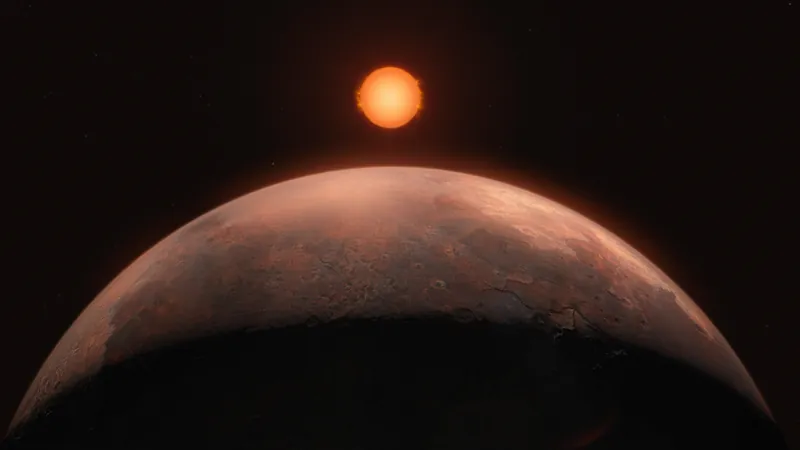
Exciting Discovery: 'Sub-Earth' Exoplanet Found Near Our Closest Lone Star!
2024-10-01
Author: Ling
Introduction
In a groundbreaking discovery, astronomers have identified a new exoplanet orbiting Barnard's star, the closest solitary star system to our solar system. This intriguing world, dubbed Barnard b, possesses about half the mass of Venus, classifying it as a “sub-Earth.”
Distance and Orbit
Located approximately six light-years away from Earth, Barnard b completes an orbit around its red dwarf parent star in just over three Earth days, situated merely 1.8 million miles away—only 5% of the distance between our sun and Mercury. Despite its proximity, Barnard b is too hot to support liquid water, as it lies well within the star's scorching zone. Jonay González Hernández from Spain's Instituto de Astrofísica de Canarias, who led the research, commented, “Although Barnard's star is cooler than our sun by about 2,500 degrees Fahrenheit, it’s still too extreme for life as we know it.”
Discovery Method
The discovery was made using the Very Large Telescope (VLT) at Cerro Paranal in the Atacama Desert of Chile, utilizing the Echelle Spectrograph for Rocky Exoplanets and Stable Spectroscopic Observations (ESPRESSO). The planet's presence was inferred from the slight “wobble” it induces in the motion of Barnard's star due to gravitational forces—an innovative technique vital for exoplanet detection.
Barnard's Star: The Lone Star
Interestingly, Barnard's star is not the closest star to our solar system; that distinction belongs to the Alpha Centauri system, which comprises Proxima Centauri, Centauri A, and Centauri B. Notably, the stark difference is that Barnard's star is a lone player in the cosmic dance, akin to our sun.
Characteristics of Barnard's Star
Barnard's star has drawn significant attention in the search for rocky exoplanets due to its proximity and size. These red dwarf stars are remarkably common within the Milky Way and offer favorable conditions for discovering low-mass terrestrial planets. However, it is important to note that Barnard's star is about 80% smaller than our sun and has a surface temperature of around 5,000 degrees Fahrenheit (approximately 2,800 degrees Celsius), making it much dimmer and cooler.
Ongoing Research
There is ongoing research into the composition of Barnard's star, which is believed to contain fewer “metals”—astronomers’ term for elements heavier than hydrogen and helium—compared to our sun. This characteristic could impact the formation of terrestrial planets in its orbit.
Future Prospects
Despite these challenges, Gonzalez Hernández's team remains optimistic and is conducting further observations around Barnard's star for indications of additional exoplanets. They have already detected tantalizing hints suggesting the existence of three more potential planets, eagerly anticipating confirmation with their ESPRESSO instruments.
Conclusion
“The ongoing investigation highlights that our cosmic neighborhood may be bustling with low-mass planets—an exciting prospect for future studies!” remarked Alejandro Suárez Mascareño, a fellow researcher on the project. This discovery marks a significant step forward in our understanding of the cosmic landscape and the conditions necessary for life beyond Earth. What exciting finds await as we continue to explore our nearest stellar neighbors? Stay tuned for the unfolding mysteries of our universe!





 Brasil (PT)
Brasil (PT)
 Canada (EN)
Canada (EN)
 Chile (ES)
Chile (ES)
 España (ES)
España (ES)
 France (FR)
France (FR)
 Hong Kong (EN)
Hong Kong (EN)
 Italia (IT)
Italia (IT)
 日本 (JA)
日本 (JA)
 Magyarország (HU)
Magyarország (HU)
 Norge (NO)
Norge (NO)
 Polska (PL)
Polska (PL)
 Schweiz (DE)
Schweiz (DE)
 Singapore (EN)
Singapore (EN)
 Sverige (SV)
Sverige (SV)
 Suomi (FI)
Suomi (FI)
 Türkiye (TR)
Türkiye (TR)